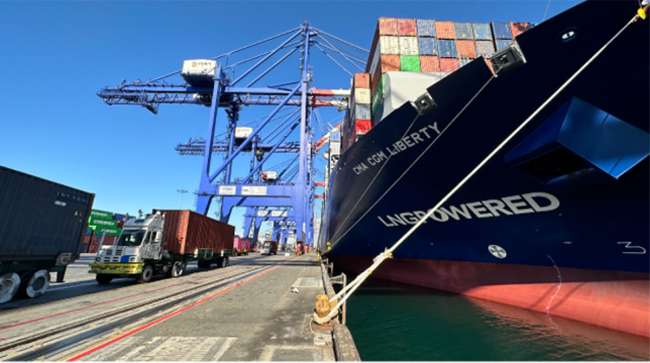Senior Reporter
GAO Tells DOT to Update Freight Handbook

[Stay on top of transportation news: Get TTNews in your inbox.]
To improve real-time decisions in the commercial transportation sector, a new government watchdog report recommended the U.S. Department of Transportation update its freight guidance.
The U.S. Government Accountability Office specifically recommended the department develop timelines to update the Federal Highway Administration’s Freight and Land Use Handbook, a document that serves as a guide for stakeholders.
GAO also recommended the development of a strategy for communicating details about the updated handbook with stakeholders. “Freight stakeholders,” according to highlights of the report, “told GAO they develop inland facilities, which GAO refers to as inland intermodal freight facilities, to increase supply chain mobility, reduce marine terminal congestion, and process freight. Freight stakeholders use such facilities to transfer cargo containers between modes of transportation … to enable cargo to move through the supply chain.”
The stakeholders include port authorities, railroads, industry associations, and state and local agencies, while modes of transportation refer to ships, trains and trucks.
The report, published April 25, was requested by a panel in the U.S. House of Representatives. Its findings responded to post-pandemic events that resulted in disruptions and delays to the delivery of goods.
“Congestion at U.S. maritime ports of entry in 2020, including the inability of many ports to unload large ships in a timely manner, has resulted in ports looking for more efficient ways to move goods from maritime ports to U.S. communities,” according to GAO. “With the majority of cargo arriving in the United States by maritime vessel, inland intermodal freight facilities can serve several purposes, including relieving congestion at maritime ports, facilitating the movement of container cargo along the supply chain, and spurring economic development.”
Assistant secretary for administration at DOT Philip McNamara said the department concurred with the two GAO recommendations and will deliver a response within 180 days. “The FHWA has already put plans in place to update the Freight and Land Use Handbook and will continue to ensure stakeholder involvement and outreach is part of the process,” he wrote on April 5. GAO included his letter in the report.
The Freight and Land Use Handbook was published in April 2012. It determined, “if freight planning and land-use decision-making activities are well integrated, both the public and private sector may benefit through reduced congestion, improved air quality and safety, enhanced community livability, improved operational efficiency, reduced transportation costs, and greater access to facilities and markets.”
The handbook also emphasized public outreach. As it put it, “providing technical assistance to officials to develop appropriate plans and codes; assisting freight-generating businesses to understand and mitigate existing or potential impacts; local, regional and state governments can foster a common understanding of freight and land use issues among all stakeholders.”
The Biden administration enacted a quick-response approach to post-pandemic supply chain concerns. In addition to dedicating funds to facilitate last-mile freight transport, DOT last year created a voluntary forum through which freight sector stakeholders can share information on supply chain issues.
The Freight Logistics Optimization Works, or FLOW, initiative aims to improve connectivity along commercial corridors. The secretary explained last month, “We brought in a number of players from across the sector — retailers, ports — anybody who we think has data that, if they were just talking to each other more, would make our ports more efficient and our supply chains more fluid.”
Want more news? Listen to today's daily briefing below or go here for more info:




